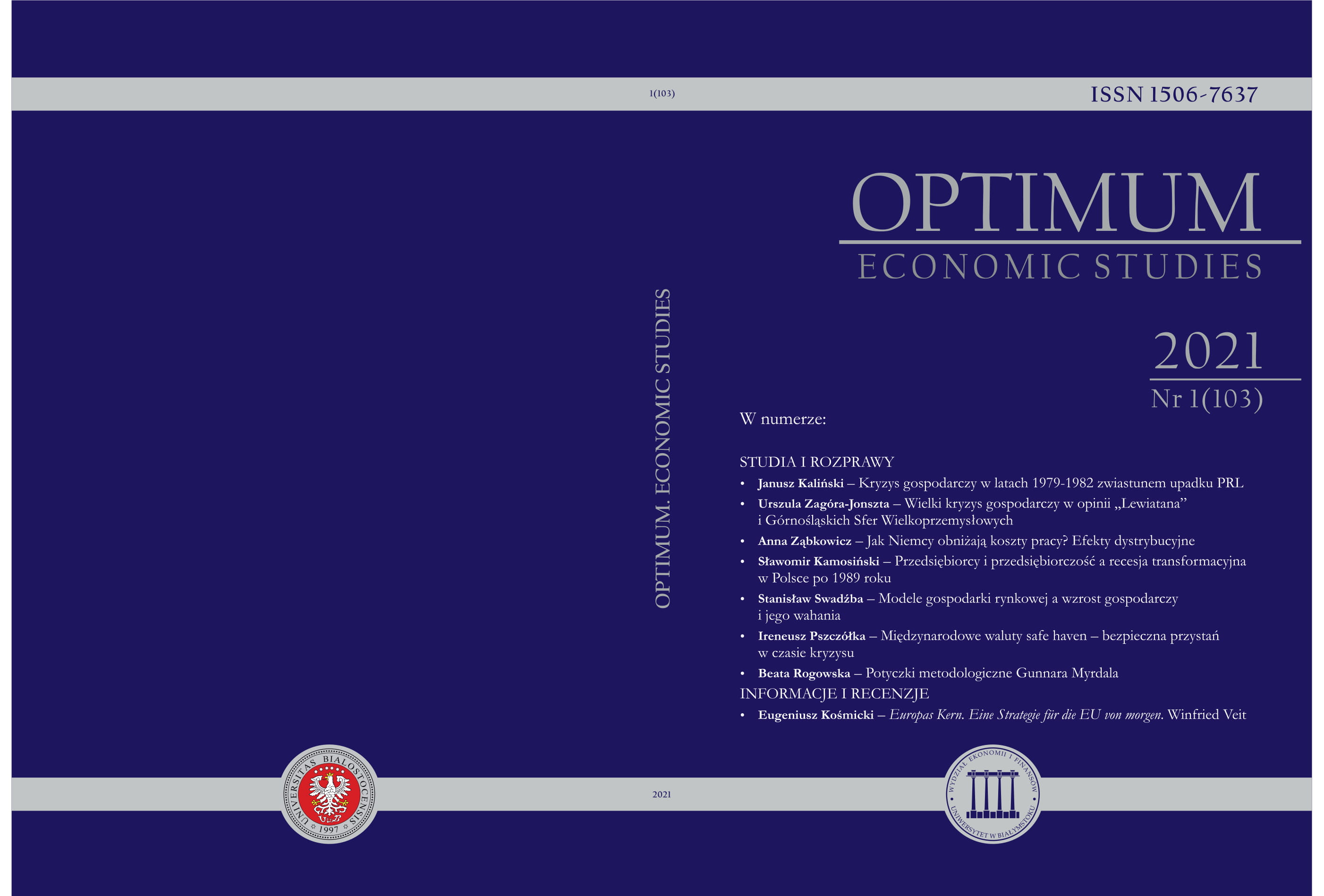Jak Niemcy obniżają koszty pracy? Efekty dystrybucyjne
How Germans constrain labour costs. distributive effects
Author(s): Anna ZąbkowiczSubject(s): National Economy
Published by: Wydawnictwo Uniwersytetu w Białymstoku
Keywords: radable sector; non-wage costs; pensions
Summary/Abstract: Purpose – Germany is successful in preserving cost advantage internationally while sustaining relatively high total labour costs. This proposal to explain the paradox does not rely on a purely economic analysis of wage costs but considers alsonon-wage costs which social security system implies but which can also be moderated by a systemic change.Research method – Theanalysis relies on separating economic sectors (part one) and on identifyingparticular parties within the social security system (part two). It aims at specific distributive effects.Results – The inter-sector and inter-regional inputs measured by wage costs explain how unit labour costs on average have been pressed down. Namely, competitive industries are able to stimulate their employees by rising wages, and to neutralize the wage-cost increases simultaneously by capturing inputsJak Niemcy obniżają koszty pracy? Efekty dystrybucyjne41both from other sectors of national economy as well as fromabroad. Accordingly, the „exposed” industries seem to be privileged by the policy of pension reforms which protect employers from conti-nuous growth of non-wage costs shifting the burden of contribution to old-age security onto employeesand state budget.Thus, the findings go further than Dustmann et al. who served as inspiration for this analysis of distributive effects.
Journal: Optimum. Economic Studies
- Issue Year: 103/2021
- Issue No: 1
- Page Range: 40-52
- Page Count: 13
- Language: Polish

